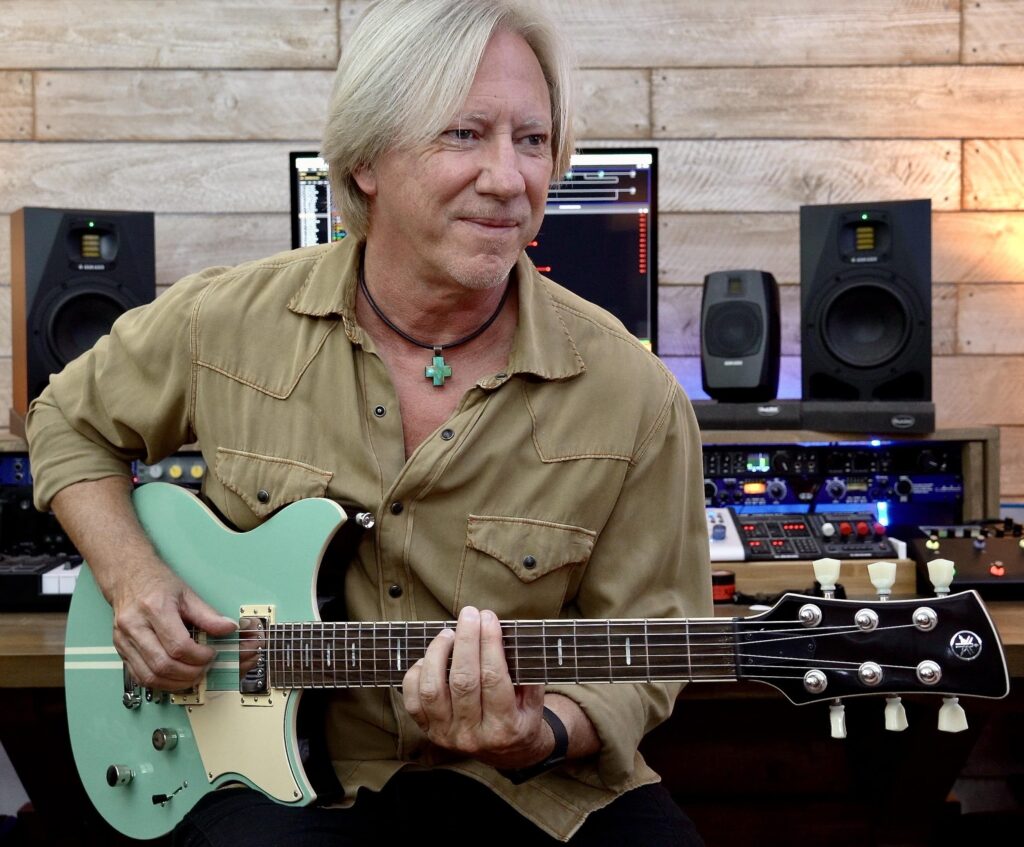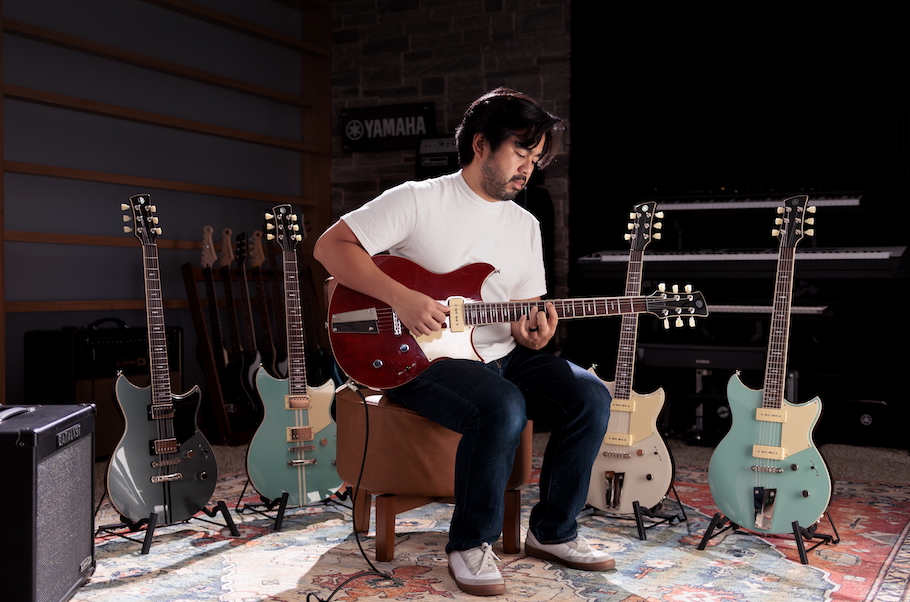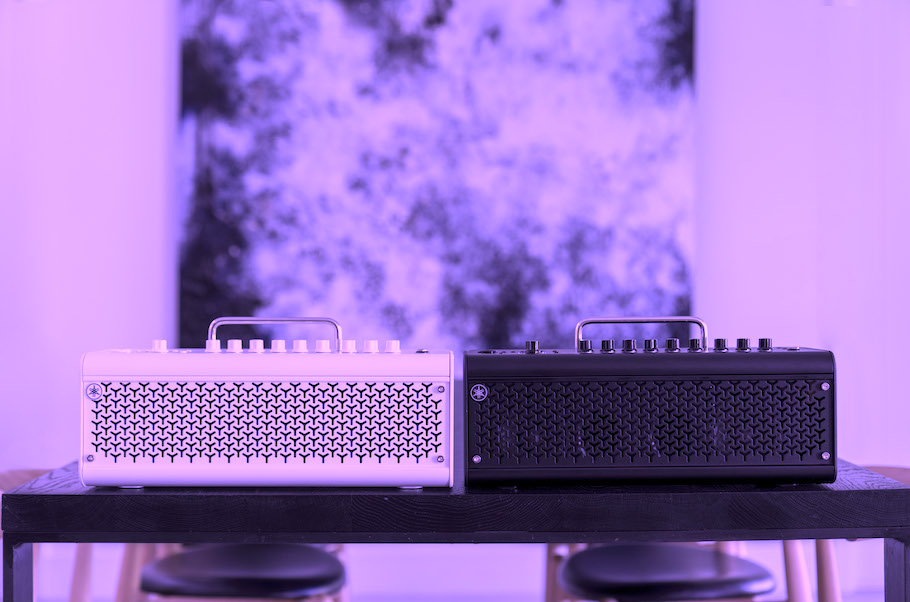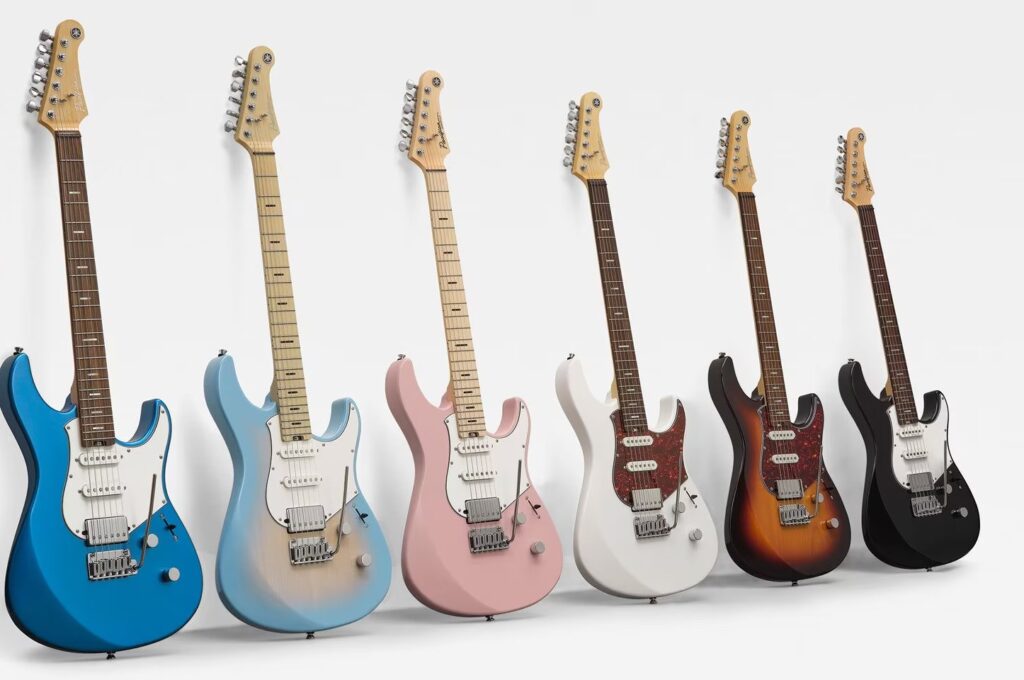A Brief History of Pacifica Guitars
From L.A. to Japan and back.
In the late 1980s, the Yamaha Guitar Development (YGD) office in Hollywood, CA included a custom shop that built guitars to order. Sensing a broader opportunity, Yamaha Corporation in Japan decided to create a mass-manufactured guitar based on the features and designs developed by YGD for its custom work.
In 1990, that project came to fruition with the release of the first Pacifica model, the PAC 912. The Pacifica would become known for its versatility, making it a favorite among top L.A. session guitarists like Michael Lee Firkins, Mike Stern, Cornell Dupree and others. Over time, it would become one of the most popular affordable quality guitar models worldwide.
Here’s a look at the eventful history of the Pacifica and how the line has evolved over the years.
The Early Days
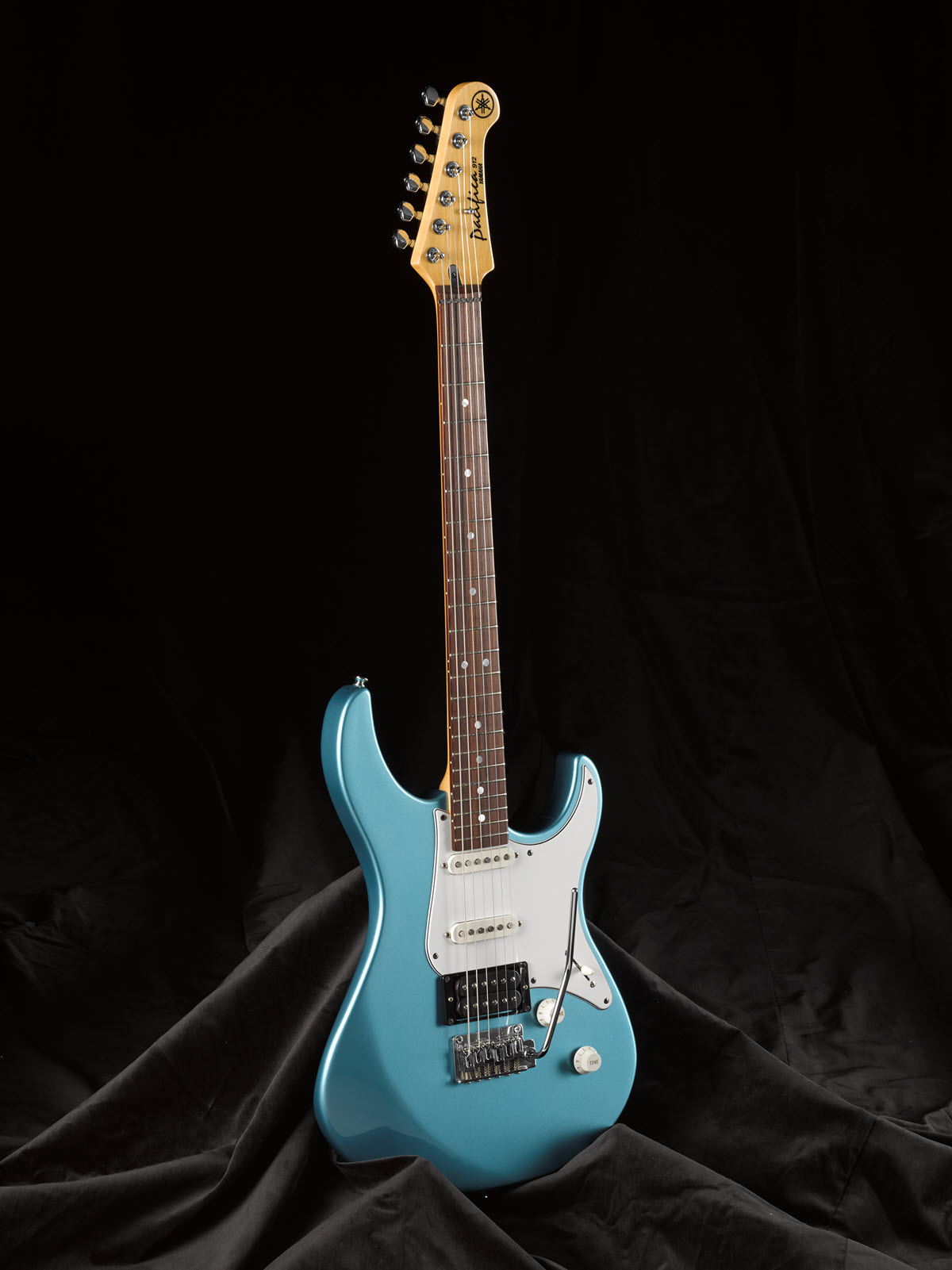
The design of the Pacifica 912 was based on the work being done at YASH, but the extensive guitar-building experience of Yamaha in Japan was also hugely important. “The Pacifica was a collaboration between the custom shop in Hollywood and Yamaha headquarters in Hamamatsu,” explains Brandon Soriano, Product Marketing Manager of the Pacifica line. “Those guitars were meant to take the custom vibe and feel and feature set and bring it to a more affordable mass market.”
“We gathered information from [local] session players, which helped us create the specifications,” adds Yusuke Ota, Product Owner, Electric Guitars at Yamaha Corporation. According to Ota, the 912 was the first example of what has been a guiding principle in the design philosophy of the Pacifica. “It’s based on the types of wood, pickups and hardware used on the YASH-built custom guitars, but made for mass manufacturing.”
The PAC912 featured a bolt-on neck, an HSS (humbucker/single-coil/single-coil) pickup configuration and a familiar double-cutaway body shape. It also marked the first time Yamaha incorporated third-party components such as Warmoth necks, Wilkinson tremolo systems and DiMarzio pickups into one of its guitars. “In 1990, that was a new way to make guitars for Yamaha,” says Ota. “Previously, we used only original parts, which weren’t replaceable by third-party companies.”
Outfitting Pacifica guitars with popular brand-name parts offered two benefits. First, it made the instruments more immediately appealing. Second, it assured buyers that if they ever decided to customize their Pacifica by swapping out essential parts such as pickups, tuning machines, bridges, etc., they could do so using standard-sized components.
Expanding and Refining the Line
In the 33 years since the PAC912 made its appearance, Yamaha released many new Pacificas in various body, neck and wood types, pickup combinations and price points. The early PAC1412 and PAC1421 models had set necks and carved tops with Yamaha proprietary RM-Pro II locking vibrato bridges, licensed by Floyd Rose. However, these guitars were quite costly to produce, so they were discontinued in 1993.

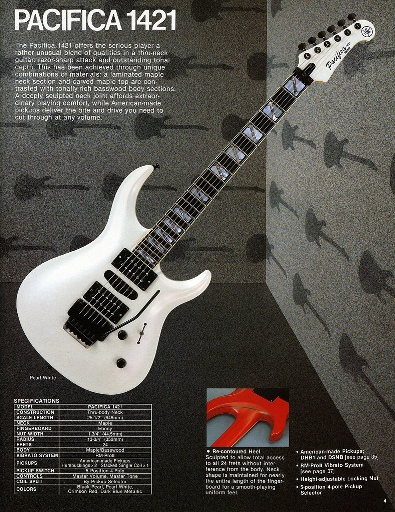
The PAC1221 model released in 1990 offered a basswood body and a warmoth neck with a compound radius reinforced with carbon graphite rods, along with DiMarzio pickups in an HSH configuration and a Yamaha tremolo bar. Other features included a height adjustable locking nut and a “Total Access” neck joint that consisted of a roomy lower body cutaway, a low profile neck heel and a machined aluminum mating block extending deep into the body. It was available with rosewood and maple fretboards, both of which had distinctive inlays.
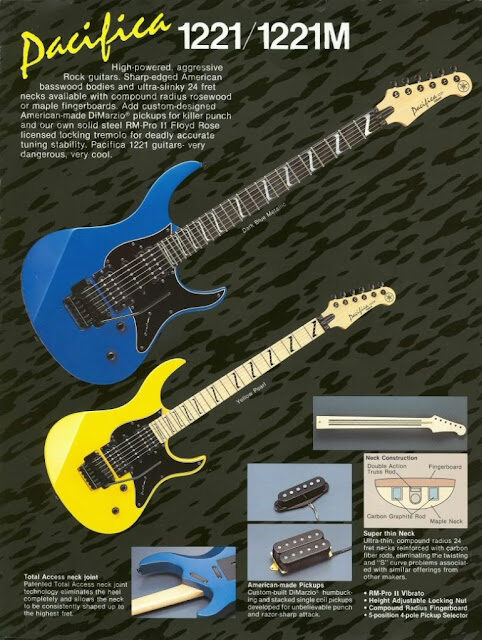
1994 saw the debut of the PAC904, which had a body consisting of an ash slab top on an alder back and a highly engineered neck joint, along with locking Sperzel machine heads and a tone control that, when pushed, split the bridge humbucking pickup into one single-coil.
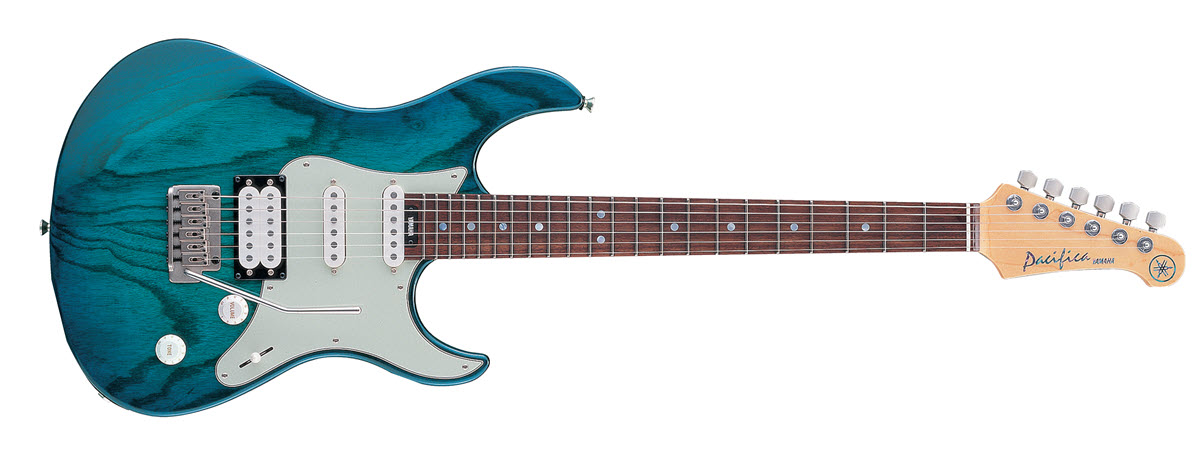
The USA1 and USA2 models that were introduced in 1995 had an alder body with a figured maple top (some quilt and some flame), a birdseye maple neck, Sperzel tuners, a Wilkinson tremolo, Duncan Vintage Rails and a Duncan JB humbucker pickup.

The twelve-string PAC303-12 was released in 1996. It came outfitted with three Yamaha Alnico single-coil pickups, a white pearloid pickguard, gold hardware and a Gotoh 12-string bridge with six ball ends at the end of the baseplate and the other six at the back of the body.
In 2011, Yamaha announced three new Pacificas: the 510, 311 and 611 models (the latter two are still available today — see below), as well as reintroducing the PAC120, which offered a pair of humbucker pickups and a hardtail bridge.
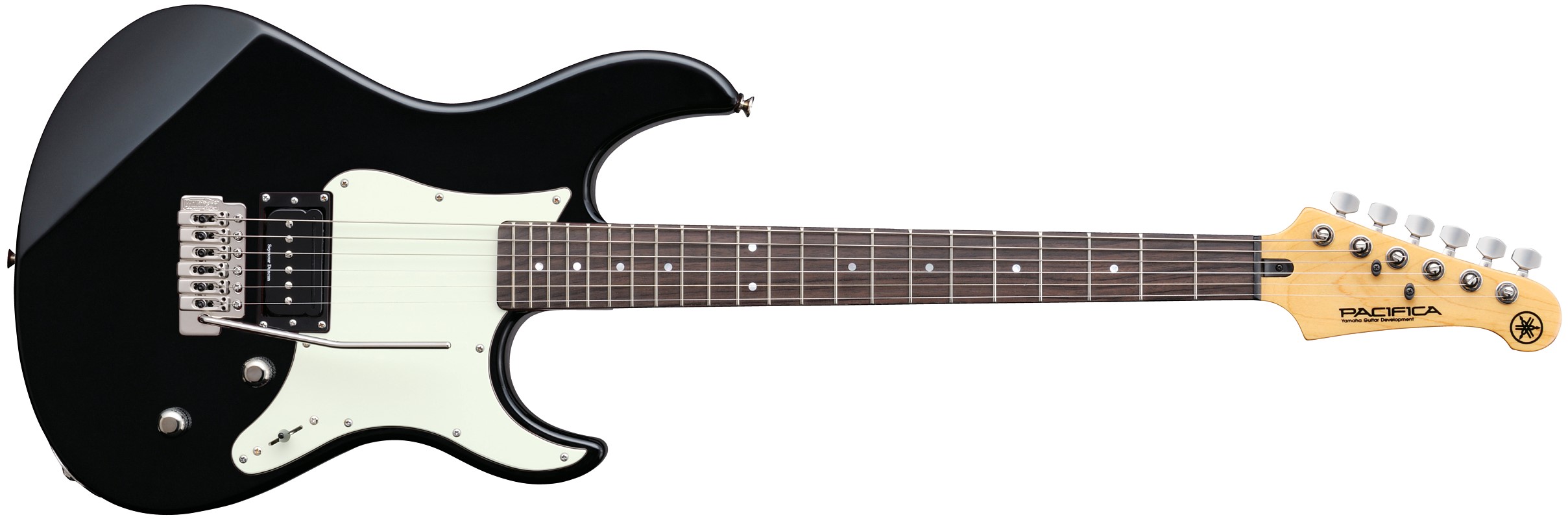
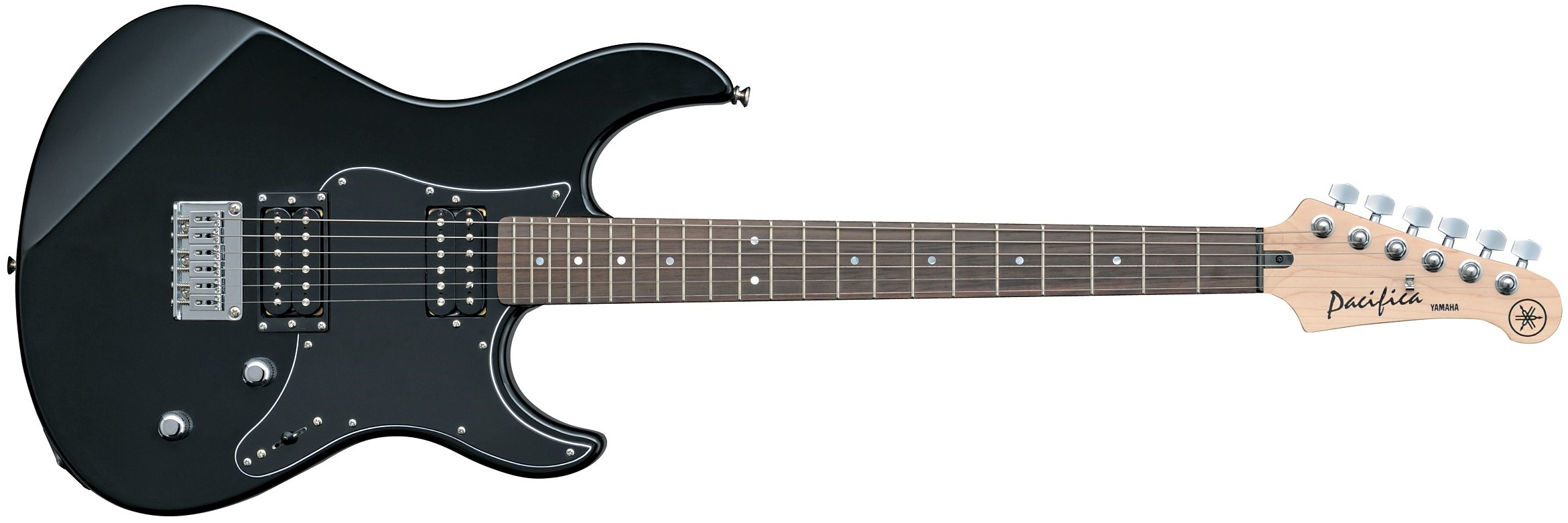
There have also been a number of Pacificas with reversed headstocks. These models (which all have the suffix “R”) included the PAC 721R and 821R.
You can actually tell a lot about the features offered by a specific Pacifica model by its suffix. For example, “J” indicates that the guitar has a rosewood fretboard, while “M” indicates that it has a maple fretboard. Other commonly used Pacifica suffixes include:
- V = Alnico-V pickups
- S = Single-cutaway
- W = Wilkinson tremolo
- H = Hardtail
- D = Alternative body shape
- FM = Flame maple
- QM = Quilted maple
- CX = Fancy pickguard
- L = Left-handed
Signature Models
Yamaha also expanded the high end of the line with Pacificas like the PAC311MS and PAC1511MS Mike Stern signature models (developed in 1997) and the updated PAC1611MS available today. This extraordinary instrument features a maple neck, Seymour Duncan pickups and a visually stunning blond single-cutaway ash body.
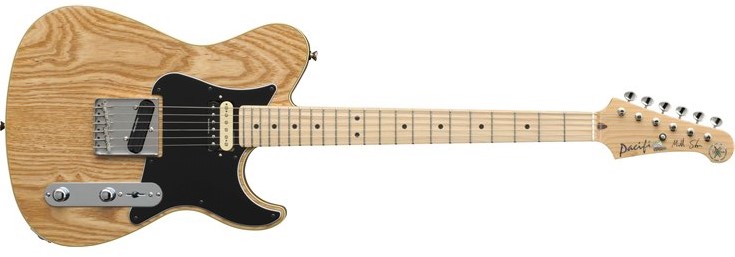
In 1999, the Pacifica 1512CD Cornell Dupree signature model made its debut (it was discontinued in 2005). It sported a single-cutaway ash body with a sunburst finish and an SSH pickup configuration with a combination of Seymour Duncan and Yamaha pickups.
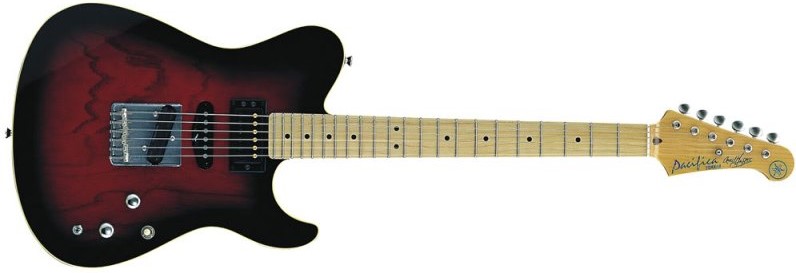
Current Pacifica Lineup
Current Pacifica models include the entry-level PAC012, which is highly affordable yet retains the essential Pacifica sound and features. It has an agathis body, a vibrato bridge and three pickups: a Yamaha humbucker and two single-coils.
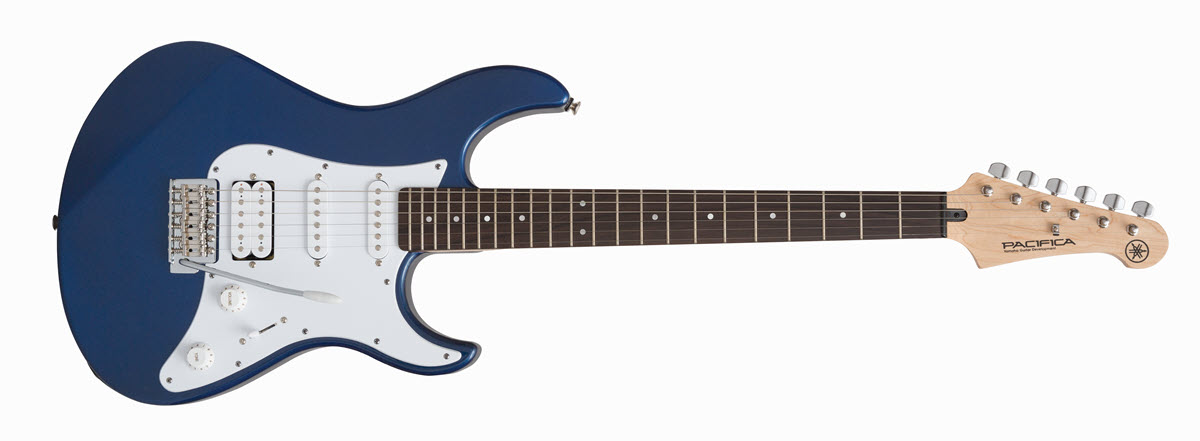
The PAC112 (part of the PAC100 Series line) has a solid alder body and maple neck, and is available with either a maple or rosewood fretboard. Its design is similar to that of the original PAC912, but with cost-effective materials that allow it to sell for significantly less.
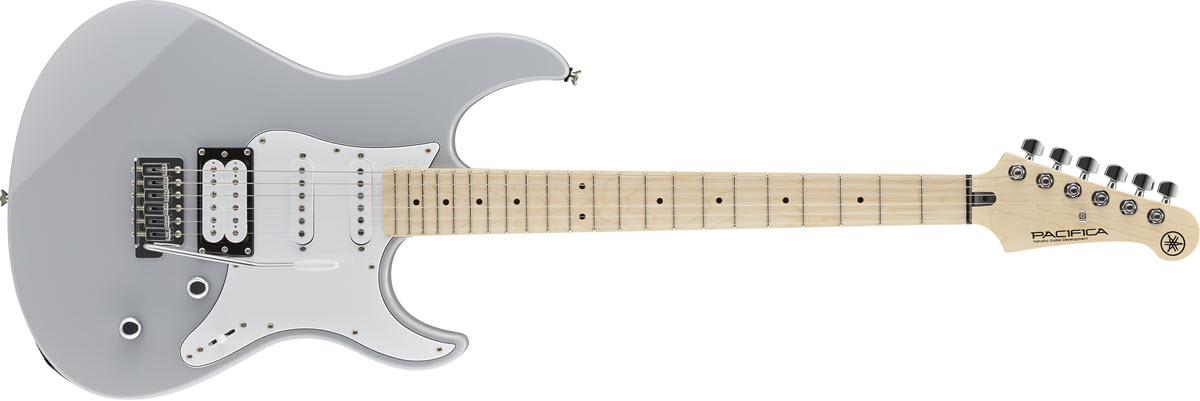
There are also a number of mid-level “step-up” guitars in the Pacifica line, such as the PAC212 and 311 models.


Both these instruments are constructed with an alder body and maple neck, and offer a push-pull coil-split switch for additional tonal options. The PAC212 is outfitted with a vintage-style vibrato bar and comes with one humbucker and two single-coil pickups, while the PAC311H has a humbucker and a P-90 type pickup, along with Grover locking tuners.
The high end of the Pacifica line is currently represented by 600 Series guitars. These versatile instruments feature Seymour Duncan pickups in two configurations, pairing a TB-14 “Custom 5” humbucker in the bridge position with an SP90-1 for vintage soapbar tone (PAC611 models) or SSL-1 single-coils in the middle and neck positions for authentic 1950s chime (PAC612 models).


All 600 Series Pacificas have alder bodies with flame maple veneer tops and a maple neck with a rosewood fingerboard and include a push-pull coil-split switch. Other features include Graph Tech TUSQ nut and string trees, Grover locking tuners and a Wilkinson VS50 vibrato bridge.
Standard Plus and Professional
The two new Pacificas released at the 2024 NAMM Show — the Standard Plus and Professional models — not only expand the line on the top end, but utilize today’s most modern guitar-making technology to provide new levels of playability and sonic versatility.
Although much more sophisticated from a design standpoint, the new guitars harken back in many respects to the early days of the Pacifica line. “These new flagship models bring Pacifica back to its roots as more of a high-end professional-grade instrument,” says Soriano.
All Standard Plus and Professional Pacificas feature alder bodies, maple necks and stainless-steel frets and are available with either rosewood or maple fingerboards.

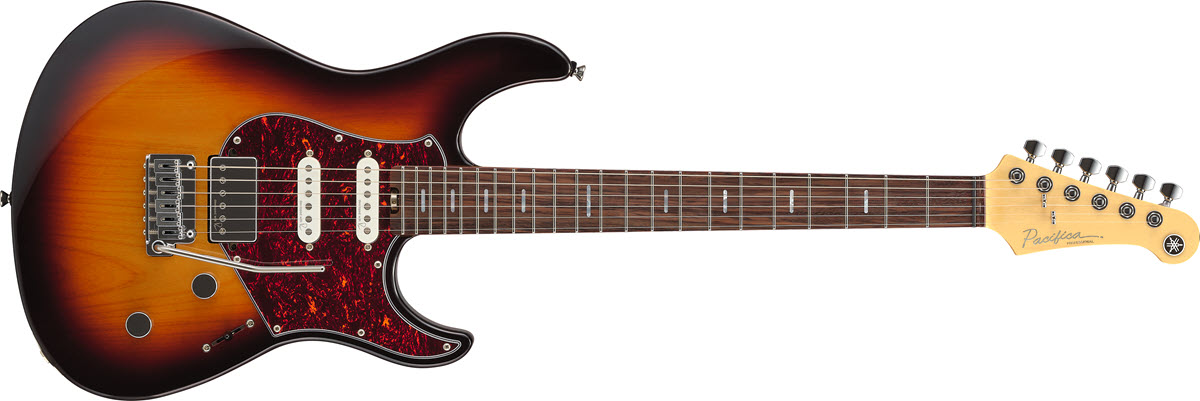
These guitars feature a new iteration of the Pacifica body that provides impressive tonal balance and is based on technology Yamaha first utilized in the second-generation Revstar line.
“For the past several years,” Soriano explains, “Yamaha has been implementing Acoustic Design technology, which is a form of chambering, but not in the traditional sense. Usually, in the guitar world, if you hear about chambering, you picture someone just taking chunks of wood out. This is different. We had scientists meticulously doing 3D modeling and mapping out how to shape the body and take certain parts out so that the whole thing resonates as freely as possible.”
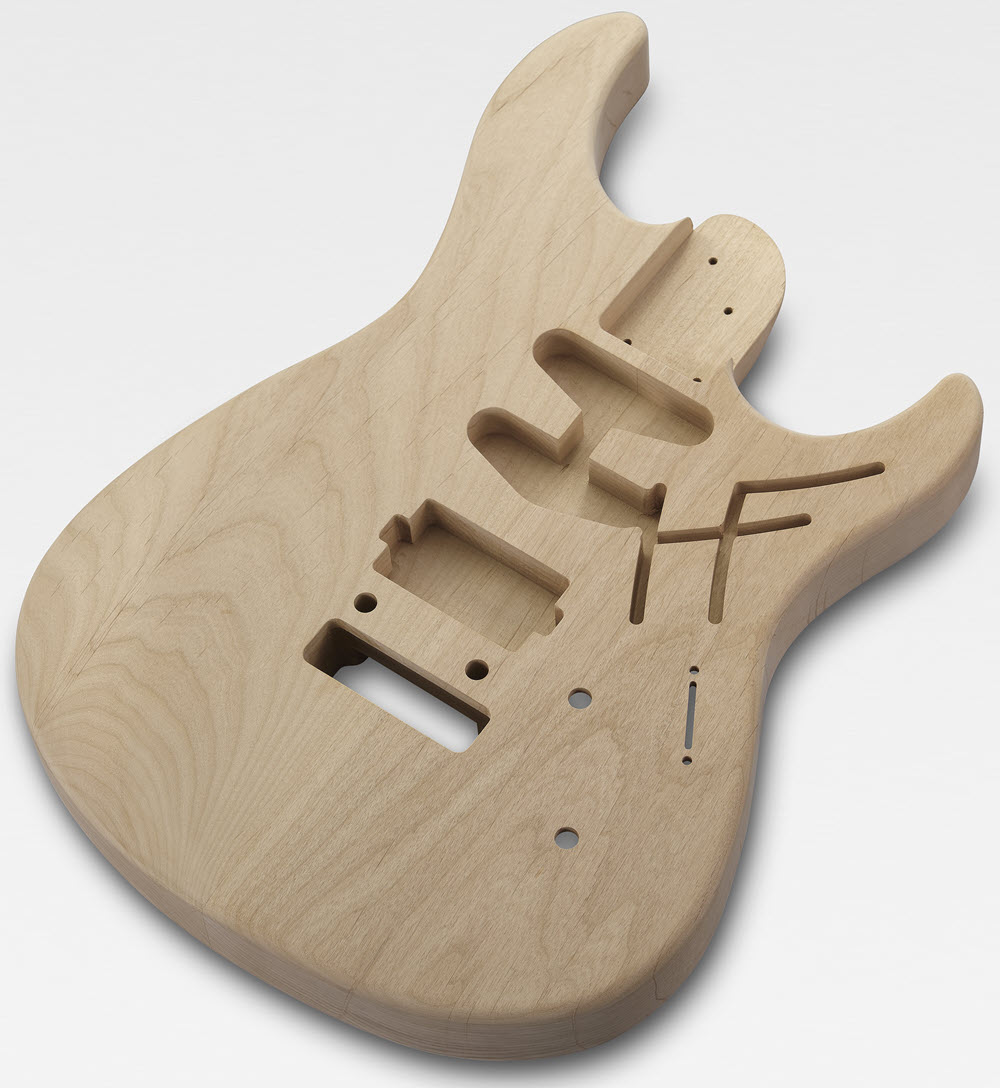
Another critical factor in the extensive tonal range of the new Pacifica guitars is its pickup technology. Perhaps the most surprising development is that these pickups are produced in conjunction with Rupert Neve Designs, a company renowned for its recording consoles, preamps and other pro audio gear.
If you’ve never heard of Rupert Neve Designs pickups, that’s because the ones in the new Pacificas are the first the company has helped create. They never would have made them at all had it not been for a chance discovery. “Yamaha has a deep relationship with their designs in the context of the Pro Audio division regarding mixers, speakers and those kinds of products,” explains Ota. “One of our engineers discovered that one of the Rupert Neve engineers liked to wind pickups as a hobby. Then he found the pickups in the engineer’s garage and asked if he could bring them back to Japan and show them to the guitar development team.”
The pickups had an exceptionally wide tonal response due to the unique way they were wound. Yamaha and Rupert Neve Designs ended up partnering in their development of the Pacifica, naming the new pickup line Reflectone.
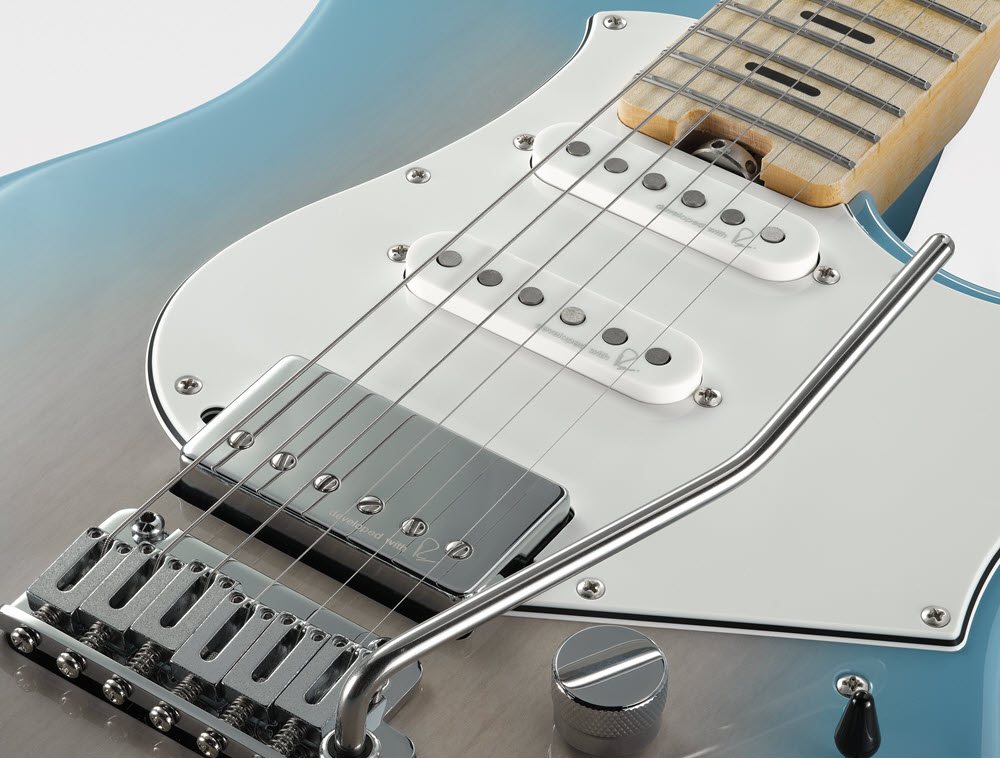
All new Standard Plus and Professional model Pacificas are equipped with Reflectone pickups in an HSS configuration. “Positions two and four on the five-way selector switch are reverse-wound, reverse polarity, so they’re hum-canceling,” Soriano says. “They’re designed to be super clear and have an ultra-wide response, with the thought being that any player can get their sound out of the pickups. It’s like a block of clay that you can sculpt into whatever you want.”
The new Pacificas have a striking look too. Their subtly beautiful finishes are based on those featured on album covers of the City Pop genre, popular in Japan in the 1970s and 1980s, inspired by the California music scene.

“Those covers showed West Coast scenery, but were painted by Japanese artists,” Ota explains, “and featured a distinctive Japanese sense of color.” Adds Soriano, “In the spirit of returning to Pacifica’s roots, incorporating the Japanese City Pop aesthetic made perfect sense.”
From L.A. to Japan and back … and now available to the world!











